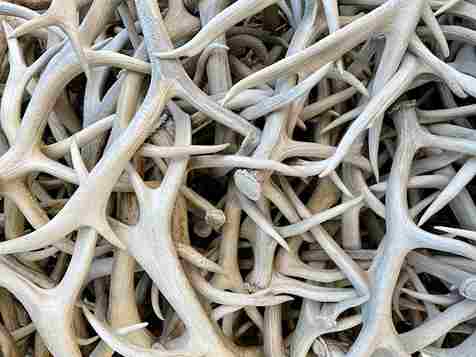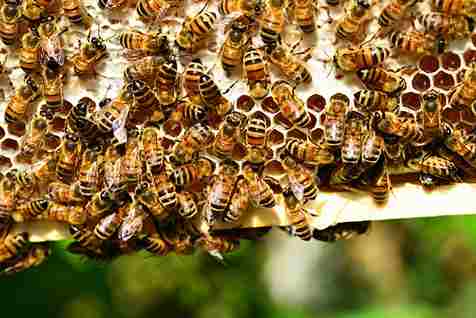Do Squids Have Beaks? (Everything You Need To Know)
Not many people know about squids, and that is because they are quite different from other sea animals. Their large eyes, many arms, elongated soft bodies, and tentacles are some of their unique features.
You may also notice something that looks like a beak, similar to the one in parrots. If you’re here, you’re probably wondering if it’s really a beak or their mouth.

Do squids have mouths or beaks?
Squids have beaks that perform a similar function as jaws in some animals. It resembles that of a parrot and is used for crushing shells and breaking the bones of their prey. It is also used for self-defense and adapting to its prey. The squid is located in the center of the tentacle.
Why do squids have beaks like birds?
The squid uses its beak for a lot of things, similar to a flesh-eating bird. This may be why their beaks resemble that of a bird, especially carrots.
Squids use their beaks for feeding and handling prey. Also, they use it to break the shells of clams and crab, as well as tearing and grabbing flesh.
In general, the beak of a squid is very similar to that of a bird in terms of strength, shape, and functionality. But they have some differences.
For instance, while the squid of a bird is mostly composed of minerals and metals, a squid’s beak is composed mainly of organic materials like chitin. Larger squids can use their squid to paralyze prey by snapping their spine in two.
Do all squids have beaks?
There are over 300 known species of squids. All of them have a beak.
The beak of a squid is evidence of its adaptation. It is a characteristic feature of organisms in the cephalopod class. This class also includes the octopus and cuttlefish.
Furthermore, the presence of a beak in every squid is also proof of their primary predatory lifestyle.
It is the first stage of their complex digestive system. It houses the radula, which is the toothed tongue used for shredding food to be digested.
Do squids have beaks for months?
A squid’s beak stays on from a few weeks to a few months before molting and growing into a new one.
Squids are born with their beaks and do not lose them naturally throughout their lifetime, like most animals shed their tails or antlers.
As a squid grows, its beak is supposed to grow with it. However, due to its hard, chitinous nature, the beak can only grow by molting. The old beak loses its outer layer. As the layer comes off, a new, bigger beak is exposed.
This means that squids cannot regenerate their beaks once they lose them due to other activities like a fight. They do not lose it naturally, like shedding. But it molts as it gets bigger.
Squid beak bite force?
The bite force of a squid’s beak depends on the size of the squid. This can range from 0.001 PSI of the firefly squid up to 1000 PSI of the jumbo squid.
Size, species, and primary diet of the squid are all factors that determine how strong of a bite a squid will have.
Bigger squids will definitely bite stronger than the smaller ones. Here are some species of squids with their bite force.
- The jumbo squid with a bite force of more than 1000 PSI
- The beak of a colossal squid bites down with a force of 100 PSI
- The Humboldt squid crushes its prey with a force of less than 1000 PSI
- The Giant squid has a bite force of 100 PSI
- Due to its delicate nature and small size, the firefly squid has a very weak bite force of less than 1 PSI
What animal has the longest beak?
You may be wondering what animal has the longest beak. Well, you may be surprised to know that it is the Austrian pelican. Its beak can grow to be between lengths of 34 to 45 cm. That’s pretty long.
However, in relation to body size, the longest beak goes to the sword-billed hummingbird. This 12cm bird has a beak that can grow to lengths of 14 cm. That’s longer than its entire body. This bird uses its long beak to suck nectar from flowers.
Other Animals that have a beak
The squids are not the only animals with beaks. They are not even the only marine animals with beaks. Under the water, we have the octopus, nautilus, and cuttlefish. Above water, birds, tortoises, and platypus have one too.
Birds
Probably the most popular beaked animal. The beak of aquatic birds is called a bill.
Birds of different kinds use their beaks for feeding, courtship, preening, and feeding their young.
The beak of a bird is shaped depending on what the bird eats. Flesh eaters have a more curved beak, while woodpeckers and nectar suckers have a long sharp beak.
Platypus
Known as the only mammal with a beak. The bill of a platypus also serves the function of a paddle for swimming. This is in addition to its feeding and preening functions.
Nautilus
Soft like a squid with a hard curvy shell. The nautilus has its beak nested at the opening of its shell. It uses it to tear up crabs, shrimp, and fish before swallowing.
Tortoise and turtles
The short beak of this reptile is also called a rhamphotheca. It is short and usually has some fleshy parts which it uses to lure prey in when hunting underwater. The rhamphotheca has some serrated edges that let them shred their food right before they eat it.
Do octopuses have beaks?
Yes, they do. Octopus also belongs to the class Cephalopoda. Every member of this class has characteristic features like a soft body, long tentacles, and a beak.
The beak is a dark-curved structure located under the head of the octopus. It sits at the center of their long appendages and serves many functions. For instance, they can use it to catch fish, clams, and mollusks.
They may also use it for self defense. Once an octopus feels threatened, it spreads out its tentacles and lunges at its opponent. This allows its beak to hook onto the attacker and deal some damage.






